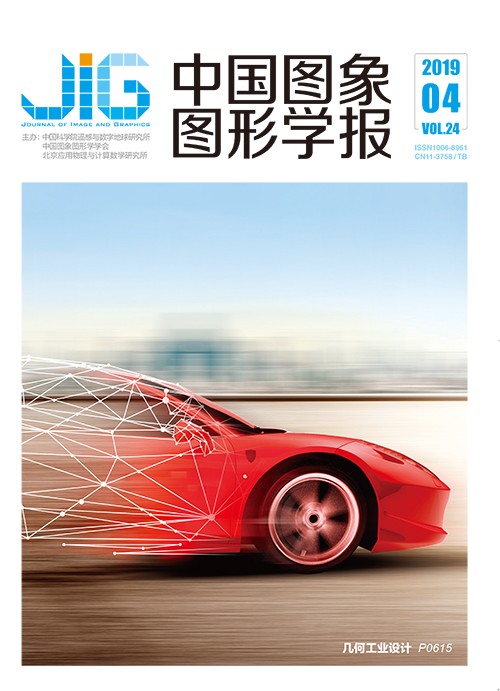
结合人体检测和多任务学习的少数民族服装识别
摘 要
目的 少数民族服装色彩及样式种类繁多等因素导致少数民族服装图像识别率较低。以云南少数民族服装为例,提出一种结合人体检测和多任务学习的少数民族服装识别方法。方法 首先通过k-poselets对输入的待识别图像和少数民族服装图像集中的训练图像进行人体整体和局部检测以及关键点的预测;其次,根据检测结果,从待识别图像和训练图像中分别提取颜色直方图、HOG (histogram of oriented gradient)、LBP(local binary pattern)、SIFT(scale invariant feature transform)以及边缘算子5种底层特征;然后,将自定义的少数民族服装语义属性与提取的底层特征进行匹配,采用多任务学习训练分类器模型,以学习少数民族服装的不同风格;最后实现少数民族服装图像的识别并输出识别结果。另外,由于目前缺少大型的少数民族服装数据集,本文构建了一个云南少数民族服装图像集。结果 在构建的云南少数民族服装图像集上验证了本文方法,识别精度达到82.5%88.4%,并与单任务学习方法进行比较,本文方法识别率更高。结论 针对现有的少数民族服装识别率较低的问题,提出一种结合人体检测和多任务学习的少数民族服装识别方法,提高了少数民族服装图像识别的准确率和效率,同时能较好地满足实际应用需求。
关键词
Human detection and multi-task learning for minority clothing recognition
Wu Shengmei1, Liu Li1,2, Fu Xiaodong1,2, Liu Lijun1, Huang Qingsong1,2(1.Faculty of Information Engineering and Automation, Kunming University of Science and Technology, Kunming 650500, China;2.Computer Technology Application Key Laboratory of Yunnan Province, Kunming 650500, China) Abstract
Objective In view of the increasing number and diversity of minority clothing in the domains of multimedia, digital clothing, graphics, and images, understanding and recognizing minority clothing images automatically is essential. However, most previous works have used low-level features directly for classification and recognition, there by lacking local feature analysis and semantic annotation of clothing. The diversity of clothing colors and styles results in low recognition accuracy of minority clothing. Therefore, a minority clothing recognition method based on human detection and multitask learning was proposed for Yunnan minority clothing. Method The main idea of this work is to propose the k-poselets detection method to detect minority clothing image and define the semantic attributes of the low-level features of minority clothing matching. Moreover, the multi-task learning method is also applied to improve the accuracy of recognition of minority clothing images. First, the k-poselets approach was used to perform global and local human detection and key point predictions using a minority clothing dataset. Second, five types of low-level feature, including color histogram, HOG (histogram of oriented gradient), LBP(local binary pattern), SIFT(scale invariant feature transform), and edge, of the identifying and training image were extracted. Then, semantic attributes were defined to match the five low-level features, and a multitask learning classifier model was trained to obtain different styles of minority clothing. Finally, the recognition results of minority clothing were realized and outputted. Given the lack of minority clothing dataset, we also constructed a minority clothing dataset of Yunnan, including 25 minority clothing, which were collected mainly from online stores including Taobao, Tmall, Jingdong, and other platforms. Each ethnic group had 1 000 maps with a total of 25 000 images. The size of each image was set to 500×500 pixels, and different ethnic groups were classified and numbered. The background of the image was appropriately processed using.jpg format. Result The proposed method is validated on the dataset of Yunnan minority clothing. Results show that the human detection method not only achieves greater precise recall rate but also remarkably outperforms the DPM and the traditional poselet detection in the task of human prediction. At the same time, in comparison with the current detection method that uses the features extracted by the convolutional neural network, the experimental results are acceptable and demonstrate the effectiveness of the proposed approach. Moreover, the recognition accuracy of minority clothing images can reach 82.5%88.4%. The proposed method has higher recognition rate than the single-task learning method. Conclusion Faced with a wide variety of colors and styles of minority clothing, the recognition rate of minority clothing is low. Thus, a minority clothing identification method based on human detection and multitask learning is proposed to improve the accuracy and efficiency of minority clothing image recognition for excellent practical applications. The research results can be used for the digital analysis, understanding, and identification of Chinese minority clothing, as well as provide an effective digital tool for recording, inheriting, and protecting the national culture and promote the development of tourism, economy, and culture in ethnic areas. Although the method has certain limitations, it can provide a clear direction for future research. We only consider major attributes and limited set of training images for detection, feature extraction, and classification. The diversity of human posture and occlusion issue can affect the recognition accuracy of minority clothing images. Furthermore, our current work focuses on the dataset with 25 minorities of Yunnan. In future works, we aim to extend our method to more applications and address the limitations in the current method. Further investigations and analysis are required for extreme situations, such as clothing accessories for minorities.
Keywords
|



 中国图象图形学报 │ 京ICP备05080539号-4 │ 本系统由
中国图象图形学报 │ 京ICP备05080539号-4 │ 本系统由